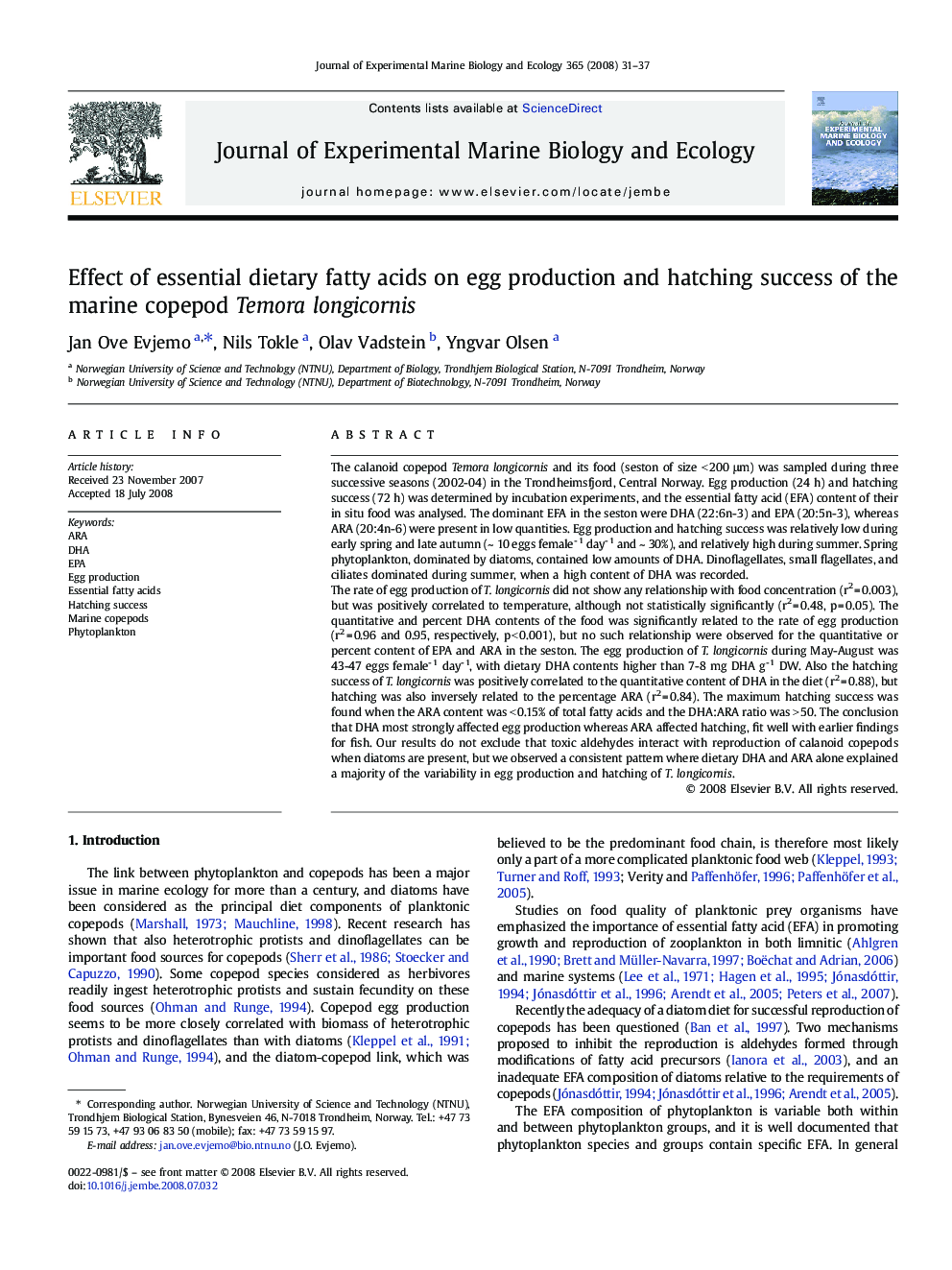| Article ID | Journal | Published Year | Pages | File Type |
|---|---|---|---|---|
| 4397078 | Journal of Experimental Marine Biology and Ecology | 2008 | 7 Pages |
The calanoid copepod Temora longicornis and its food (seston of size < 200 μm) was sampled during three successive seasons (2002-04) in the Trondheimsfjord, Central Norway. Egg production (24 h) and hatching success (72 h) was determined by incubation experiments, and the essential fatty acid (EFA) content of their in situ food was analysed. The dominant EFA in the seston were DHA (22:6n-3) and EPA (20:5n-3), whereas ARA (20:4n-6) were present in low quantities. Egg production and hatching success was relatively low during early spring and late autumn (~ 10 eggs female- 1 day- 1 and ~ 30%), and relatively high during summer. Spring phytoplankton, dominated by diatoms, contained low amounts of DHA. Dinoflagellates, small flagellates, and ciliates dominated during summer, when a high content of DHA was recorded.The rate of egg production of T. longicornis did not show any relationship with food concentration (r2 = 0.003), but was positively correlated to temperature, although not statistically significantly (r2 = 0.48, p = 0.05). The quantitative and percent DHA contents of the food was significantly related to the rate of egg production (r2 = 0.96 and 0.95, respectively, p < 0.001), but no such relationship were observed for the quantitative or percent content of EPA and ARA in the seston. The egg production of T. longicornis during May-August was 43-47 eggs female- 1 day- 1, with dietary DHA contents higher than 7-8 mg DHA g- 1 DW. Also the hatching success of T. longicornis was positively correlated to the quantitative content of DHA in the diet (r2 = 0.88), but hatching was also inversely related to the percentage ARA (r2 = 0.84). The maximum hatching success was found when the ARA content was < 0.15% of total fatty acids and the DHA:ARA ratio was > 50. The conclusion that DHA most strongly affected egg production whereas ARA affected hatching, fit well with earlier findings for fish. Our results do not exclude that toxic aldehydes interact with reproduction of calanoid copepods when diatoms are present, but we observed a consistent pattern where dietary DHA and ARA alone explained a majority of the variability in egg production and hatching of T. longicornis.
